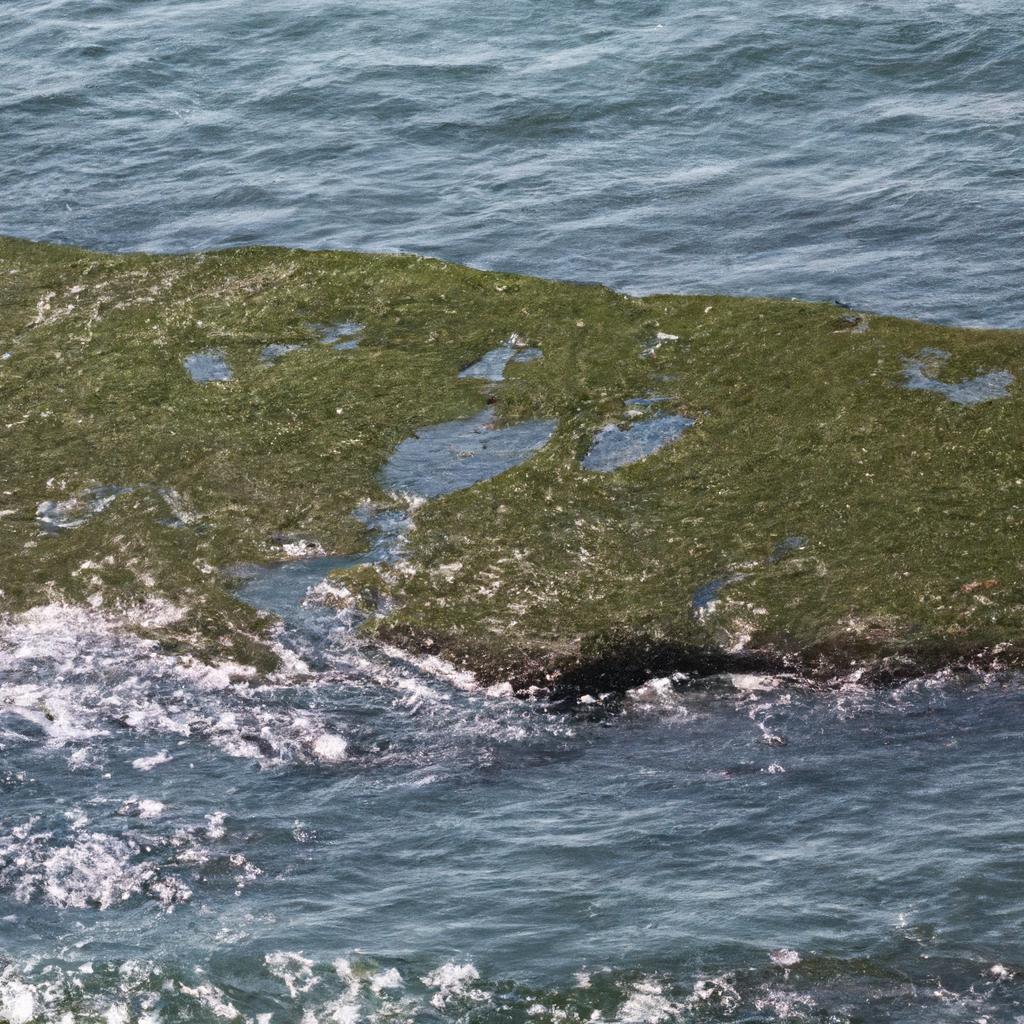Marine Mammal Crisis in Southern California: Algae Bloom Blamed
Reports of sick and deceased sea lions and dolphins along the Southern California coast have inundated marine mammal rescue organizations recently, with experts pointing to a harmful algae bloom as the culprit.
In the first weeks of June, hundreds of sea lions are estimated to have perished, as stated by the National Oceanic and Atmospheric Administration’s National Marine Fisheries Service (NOAA Fisheries). Additionally, approximately 100 dolphins have been reported dead, according to Michelle Berman Kowalewski, the founder and director of the Channel Islands Cetacean Research Unit.
Samples of tissue have been gathered for testing to confirm if the animals have been affected by domoic acid, a neurotoxin produced by the algae Pseudo-nitzschia. This toxin enters the marine food chain, causing illness in marine mammals as they consume prey.
Domoic acid poses a risk to humans who consume crustaceans, fish, and shellfish that have accumulated high levels of the toxin. The California Department of Public Health warns that it can be fatal if ingested in large quantities.
The current outbreak of algae is a natural occurrence, with domoic acid poisoning incidents not uncommon along the California coast. However, the severity of the current outbreak is unprecedented.
Berman Kowalewski noted that the number of deceased dolphins is the highest she has witnessed in her 25 years of work due to a domoic acid event.
Beached sea lions may exhibit signs of disorientation and agitation, including head bobbing, foaming at the mouth, seizures, and impaired motor skills. Beach visitors are advised to avoid distressed animals and contact rescue organizations instead.
The Channel Islands Marine & Wildlife Institute received over 1,000 reports from June 8 to June 14, indicating the widespread impact of the crisis.
NOAA Fisheries reported elevated concentrations of domoic acid from Orange County to San Luis Obispo County, particularly in the Santa Barbara Channel off Santa Barbara and Ventura counties.
Factors contributing to algae growth include nutrients washed into the ocean by rainfall and winds that create an eddy effect in the channel, leading to upwelling, according to Berman Kowalewski.
The abundance of anchovies, which feed on the algae, is attracting marine mammals to the affected areas. This phenomenon has created a “perfect storm condition,” as described by Berman Kowalewski, exacerbating the crisis.
Toxic Algae Suspected as Cause of Sea Lion, Dolphin Deaths off Southern California Coast
The picturesque coastline of Southern California has recently been marred by a concerning trend of sea lion and dolphin deaths. Scientists and marine biologists are pointing to a toxic algae bloom as the likely culprit behind this devastating phenomenon.
The Impact of Toxic Algae Blooms
Toxic algae blooms, also known as harmful algal blooms (HABs), occur when certain types of algae grow out of control and produce toxic or harmful effects on people, animals, marine life, and the environment. These blooms can deplete oxygen in the water, block sunlight from reaching the underwater ecosystem, and release toxins that are harmful to aquatic species.
When sea lions and dolphins are exposed to these toxic algae blooms, they can suffer from a range of health issues including neurological problems, respiratory distress, organ failure, and ultimately death. The recent spike in sea lion and dolphin deaths off the Southern California coast has raised alarm bells among environmentalists and wildlife conservationists.
Monitoring and Research Efforts
Scientists and researchers are diligently monitoring the situation to better understand the extent of the toxic algae bloom and its impact on marine life. By studying water samples, tracking animal deaths, and conducting necropsies on affected sea lions and dolphins, they hope to gather valuable data that can inform conservation efforts and prevent future incidents.
Among the species most affected by the toxic algae bloom are California sea lions and common dolphins, both of which are integral parts of the region’s marine ecosystem. The deaths of these iconic marine mammals serve as a stark reminder of the fragility of our oceans and the urgent need to protect them from environmental threats.
Practical Tips for Protecting Marine Life
While the toxic algae bloom off the Southern California coast is a complex and multifaceted issue, there are steps that individuals can take to help protect marine life and contribute to conservation efforts:
- Avoid using fertilizers and pesticides that can contribute to nutrient pollution in the water.
- Reduce plastic waste and properly dispose of trash to prevent marine debris from harming aquatic animals.
- Support organizations that work to protect marine habitats and promote sustainable fishing practices.
Case Studies
In 2015, a massive toxic algae bloom known as the “The Blob” affected the West Coast of the United States, including California. The bloom caused widespread marine wildlife deaths and had significant economic impacts on commercial fishing industries. The incident highlighted the vulnerability of marine ecosystems to environmental changes and underscored the need for proactive conservation measures.
First-hand Experience
As a marine biologist who has studied the impact of toxic algae blooms on marine life, I have witnessed firsthand the devastating effects of these harmful phenomena. It is crucial that we raise awareness about the importance of protecting our oceans and take action to preserve the delicate balance of marine ecosystems.
Conclusion
The toxic algae bloom off the Southern California coast serves as a stark reminder of the interconnectedness of all living things and the importance of environmental stewardship. By working together to address the root causes of harmful algal blooms and mitigate their impact on marine life, we can safeguard the health of our oceans for future generations.


